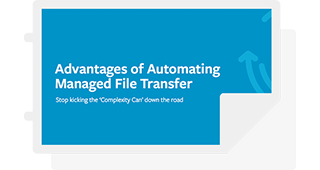How many file transfer solutions do you use?
I recently moved to a new house. It has 4 external doors, each requiring a different key. Guess what? My key chain just got a whole lot heavier. As I was distributing keys to my family and a few neighbors, it occurred to me just how confusing and inconvenient this was (for me and the recipients). Which key works where? When I’m unloading groceries from the car and both arms are full, how will I easily spot the key I need to the back door? The keys all look alike, except for their unique tooth pattern. But that’s not easy to spot at a glance.
This is going to complicate daily life for my family, and maybe even the neighbor who might be called on to help us out in a jam. I could do a lot of things to help in the interim, like:
- Add bright lights and motion sensors at every door
- Make identifying marks or codes on each key to correspond to each door
- Put every door key on every keychain
But ultimately, I just need to re-key the locks so they all use the same key. It may cost more in the short-run, but it will quickly pay for itself and simplify life for everyone.
So, if this blog title was “How many unique house keys do you use?”, my answer would be 4!
But what if the question was, “How many file transfer solutions do you use across your organization?” Would your answer be 1, 5, or even 10? File transfers are a critical part of your business (just like the keys are for getting into your house). Your files contain data required for every business service you have – billing, payroll, inventory management, order fulfillment, and on and on! But if they are so important, why are you using multiple solutions to manage them?
Better yet, why aren’t you using your workload automation platform to manage your file transfers? Every file movement is preceded and succeeded by many other dependent jobs – jobs that aren’t file transfers. When you think about any business service you provide, what’s at its core? Jobs! Some file transfer jobs are in process right alongside many other jobs that aren’t file transfers.
If you have the right workload automation solution – one that can manage complex workflows with the integration, automation and orchestration required by modern businesses – it doesn’t make sense to manage file transfers a different way. This adds costs, complexity and chaos – three “Cs” you should be working to remove from your company’s environment. The right workload automation solution can:
- Support your infrastructure, data and applications
- Manage workflows by service level, letting you focus on what matters to your business
- Provide self service capabilities that simplify access for everyone across your organization
- Empower your DevOps initiatives by providing a Jobs-as-Code approach
- Deliver complete file transfer support, including a file transfer-specific dashboard, advanced file search capabilities, purpose built components supporting external transfers, and support for multiple protocols
- Support file movement and workloads running in newer technologies like big data and the cloud
For almost every day in the past 19 years I have talked with people responsible for managing workload. Whether we discussed file transfers, operating system scripts, big data workloads, or something in between, every conversation had something in common.
The number one thing IT professionals look for in their workload automation solution, is the ability to manage and monitor all their business-critical workloads in a single, consistent and comprehensive way. It’s just like having one (really good) key to open every door to your house!
Automate managed file transfer
These postings are my own and do not necessarily represent BMC's position, strategies, or opinion.
See an error or have a suggestion? Please let us know by emailing [email protected].







